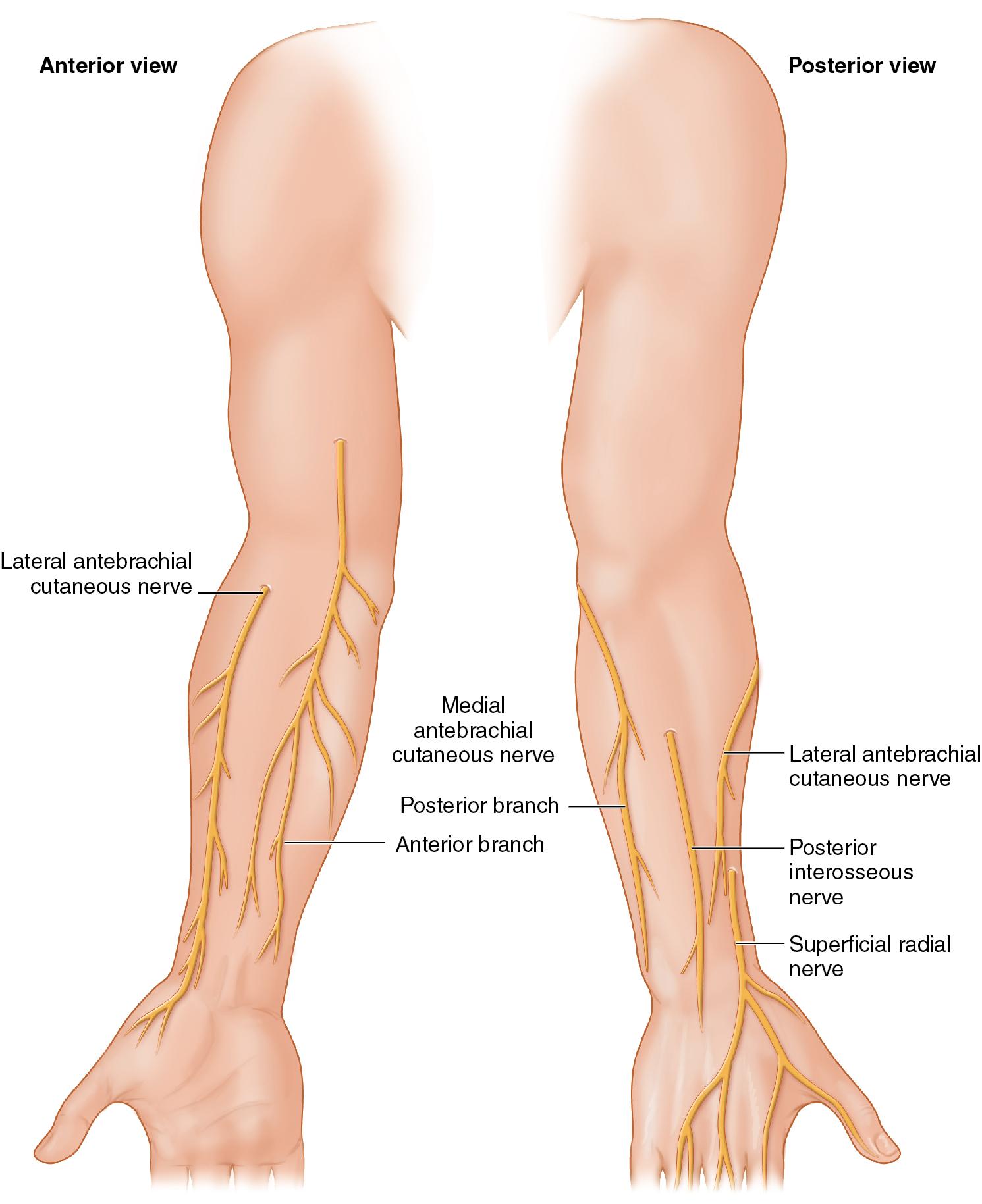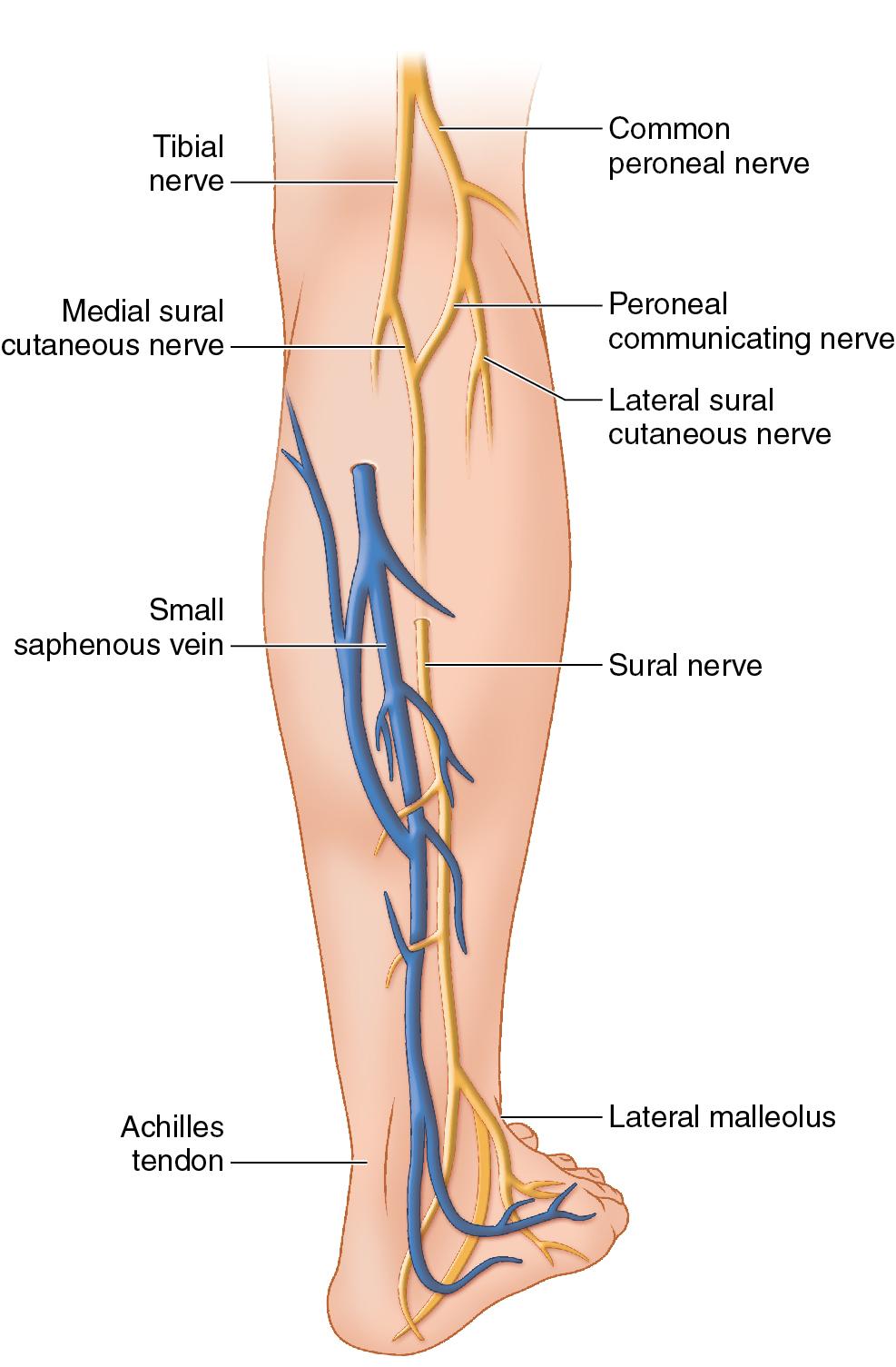Physical Address
304 North Cardinal St.
Dorchester Center, MA 02124
The major mechanisms of nerve injury include crush/compression, tension/traction, and laceration of the digits.
From superficial to deep, the layers of a peripheral nerve include the epineurium, perineurium, and endoneurium. Nerve injury can occur at any or all of these layers.
The classification of nerve injuries has been described by Seddon and Sunderland ( Table 60.1 ).
Neuropraxia describes a temporary nerve conduction block. The nerve components remain intact and patients often recover from this injury within 3 to 4 months.
Axonotmesis describes disruption of the neuronal axon with an intact epineurium that preserves the channel for the axons to grow into a defined and specific path. Spontaneous recovery after injury is possible, but timing for full recovery is variable; axonal growth occurs at a rate of 1 mm per day.
Neurotmesis describes complete nerve internal disruption to all layers, which causes mismatch of axons during regeneration. Patients will not recover without surgery.
| Seddon | Sutherland | Description |
| Neuropraxia | 1 | Conduction block, intact neural architecture; 3–4 months recovery |
| Axonotmesis | 2 | Injured axon with intact epineurium, perineurium, and endoneurium, variable recovery |
| 3 | Injured axon + endoneurium | |
| Neurotmesis | 4 | Injured axon + endoneurium and perineurium |
| 5 | All layers damaged, including epineurium |
Surgical planning for nerve repair and/or reconstruction requires consideration of the mechanism of injury, time since injury, condition of the nerve ends, possible nerve gaps, concomitant injuries (bone, blood vessels), and soft tissue coverage.
Primary nerve repair should be performed within 12 hours after sharp nerve transection injuries to optimize outcomes. Nevertheless, repair may be delayed to address contamination, concomitant injuries, or comorbid conditions.
In contrast, closed/blunt nerve injuries often require a period of observation, serial examinations, and nerve conduction/electromyography studies to permit adequate time for recovery and documentation of the nerve condition. If recovery does not occur within 3 to 6 months, then exploration and nerve primary repair or grafting should be considered.
Injured sensory nerves should be reconstructed when sensory loss affects critical areas used for contact, such as the tip of the thumb and radial side of the index finger (contact areas during pinch), and the ulnar aspect of the small finger, palm, and ulnar side of the forearm.
Nerve injuries with associated loss of motor function should be reconstructed as early as possible to prevent irreversible denervation and muscle fibrosis. Although tendon transfers can augment function for late injuries, these procedures do not completely restore joint function and mechanics; native muscle function is preferred.
Critical factors that affect outcomes after nerve repair include patient age, the time from injury to repair, the level of the injury, and the gap required for grafting.
In general, younger age is correlated with superior outcomes. Patients 20 years and younger experience faster recovery compared with patients aged 50 years and older.
Return of sensation has been observed after nerve repairs performed up to 2 years after injury. Acceptable recovery of motor function, however, is obtained only within 1 year after injury, before motor end plates at the target muscle are lost and irreversible denervation takes place.
Careful examination of the condition of the wound is necessary to determine the degree of surrounding tissue injury, contamination, and the presence and extent of associated injuries.
A full sensory and motor neurologic examination should be performed to identify any deficits and suitable donor nerves if needed. The inability to produce wrinkles or loss of sweating and perspiration may indicate nerve disruption and loss of sympathetic function; this physical examination finding is especially important in pediatric patients who have an unreliable examination.
To assess motor function, the Medical Research Council system is useful and well accepted. Both motor and sensory recovery are classified into six categories ( Table 60.2 ). Sensation should be assessed using static and moving two-point discrimination.
| Motor Recovery | |
| M0 | No contraction |
| M1 | Return of perceptible contraction in the proximal muscles |
| M2 | Return of perceptible contraction in both the proximal and distal muscles |
| M3 | Return of perceptible contraction in both the proximal and distal muscles of such a degree that all important muscles are sufficiently powerful to act against resistance |
| M4 | Return of function as in stage 3 with the addition that all synergic and independent movements are possible |
| M5 | Complete recovery |
| Sensory Recovery | |
| S0 | Absence of sensibility in the autonomous area |
| S1 | Recovery of deep cutaneous pain sensibility within the autonomous area of the nerve |
| S2 | Return of some degree of cutaneous pain and tactile sensibility within the autonomous area |
| S3 | Return of some degree of superficial cutaneous pain with disappearance of any previous overreaction |
| S4 | Complete recovery |
A Tinel sign can be indicative of nerve injury or recovery.
After nerve repair, progression of a Tinel sign from proximal to distal indicates recovery, typically at the rate of 1 mm/day. Limited progression may indicate a blockage or neuroma.
Nerve conduction studies (NCS) are obtained to determine a nerve’s response to a stimulus. Two electrodes are placed on the patient’s skin at a specific distance apart; one electrode provides the stimulus and the other records the response. The amplitude of the response corresponds to the number of depolarizing axons, whereas the latency is the time between stimulus and response. A conduction velocity is calculated by dividing the distance between the electrode and the latency. The findings of NCS can vary depending on the time and severity of the injury. Nerves that are not completely resected (i.e., neuropraxia or axonotmesis) may show evidence of recovery over time.
After transection of a nerve, the portion of the axon that is no longer in continuity with the anterior horn cells in the spinal cord undergoes degeneration and degradation, a process known as Wallerian degeneration . Wallerian degeneration typically occurs within 24 to 36 hours of an injury and is not immediately detectable on NCS.
Needle electromyography can be used to assess the condition of the injured nerve and muscle by evaluating the insertional activity, resting activity, voluntary recruitment, and motor unit recruitment. Denervation and reinnervation of the muscle can be detected and changes can be followed over time. Denervation is indicated by the presence of positive sharp waves, fasciculations, and fibrillation potentials in a resting state. Reinnervation is detected by increasing the number and amplitude of the polyphasic motor unit potential and decreasing the fibrillation potential.
Entrapment/compression nerve injury patients exhibit a decrease in conduction velocity or increased latency on nerve conduction studies.
Peripheral nerves are made up of axons that are surrounded by endoneurium. A group of axons form a fascicle, which is surrounded by perineurium. The epineurium (outermost layer) surrounds groups of fascicles.
Donor nerves:
Posterior interosseous nerve (PIN): The terminal branch of the PIN innervates the wrist joint and is often resected to treat chronic wrist pain. The nerve is expendable at this level, as branches to the extensor muscles have already come off. The PIN contains one to two fascicles and is a good size match for digital nerve reconstruction, measuring around 0.8 mm 2 in cross-sectional diameter. Up to 2.5 cm of graft can be harvested, on average. The nerve runs on the radial aspect of the floor of the fourth extensor compartment deep to the tendons of the extensor digitorum communis (EDC) and the extensor indicis proprius ( Fig. 60.1 ).

Medial antebrachial cutaneous nerve (MABC): The MABC branches off of the medial cord of the brachial plexus. There is an anterior branch and a posterior branch; one or both branches can be harvested for reconstruction, totaling up to 28 cm of graft, depending on the length of the patient’s arm. This nerve contains 5 to 7 fascicles and can be used for group fascicular repair or cable grafting. The cross-sectional area is 2 to 3 mm 2 . MABC graft can be used for multiple digital or common digital nerve reconstructions, or reconstruction of larger caliber nerves where cable graft can be prepared. The MABC runs with the basilic vein in the medial forearm overlying the bicipital groove. For additional length, the nerve branches can be traced to the axilla. If only the anterior branch is used, then the distal end of the anterior branch can be coapted to the posterior branch or the median nerve in an end-to-side fashion to minimize sensory loss after harvest.
Sural nerve: The sural nerve is the workhorse donor nerve. Depending on the height of the patient, 30 to 50 cm can be harvested. This nerve contains 9 to 14 fascicles and has an average cross-sectional area of 2.5 to 4 mm. 2 It is used for major nerve reconstruction (median and ulnar nerve) when large gaps are present. The sural nerve is composed of medial and lateral sural cutaneous branches. The medial sural cutaneous nerve arises from the tibial nerve and pierces the deep fascia of the leg between the heads of the gastrocnemius in the upper third of the leg. It is then joined by the lateral sural cutaneous nerve branch, which originates from the peroneal nerve. The sural nerve travels with the lesser saphenous vein and can be found between the lateral malleolus and Achilles tendon. The nerve innervates the posterolateral aspect of the leg and the dorsolateral foot ( Fig. 60.2 ). Harvest results in sensory deficit to this area.

Become a Clinical Tree membership for Full access and enjoy Unlimited articles
If you are a member. Log in here